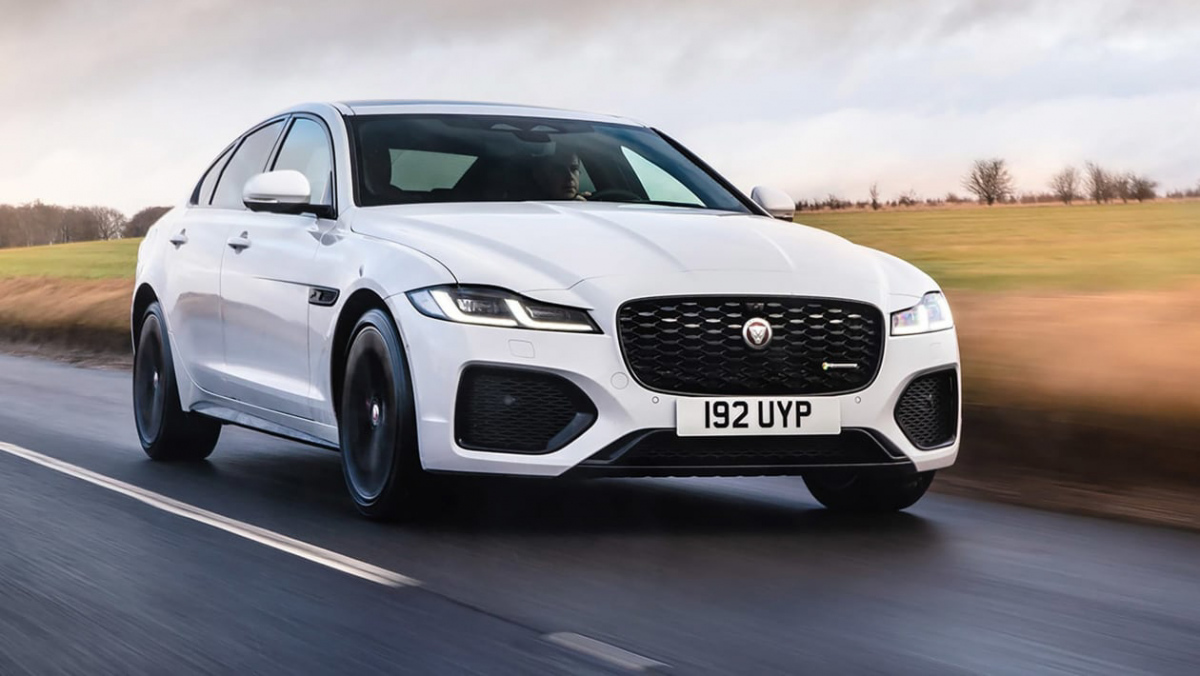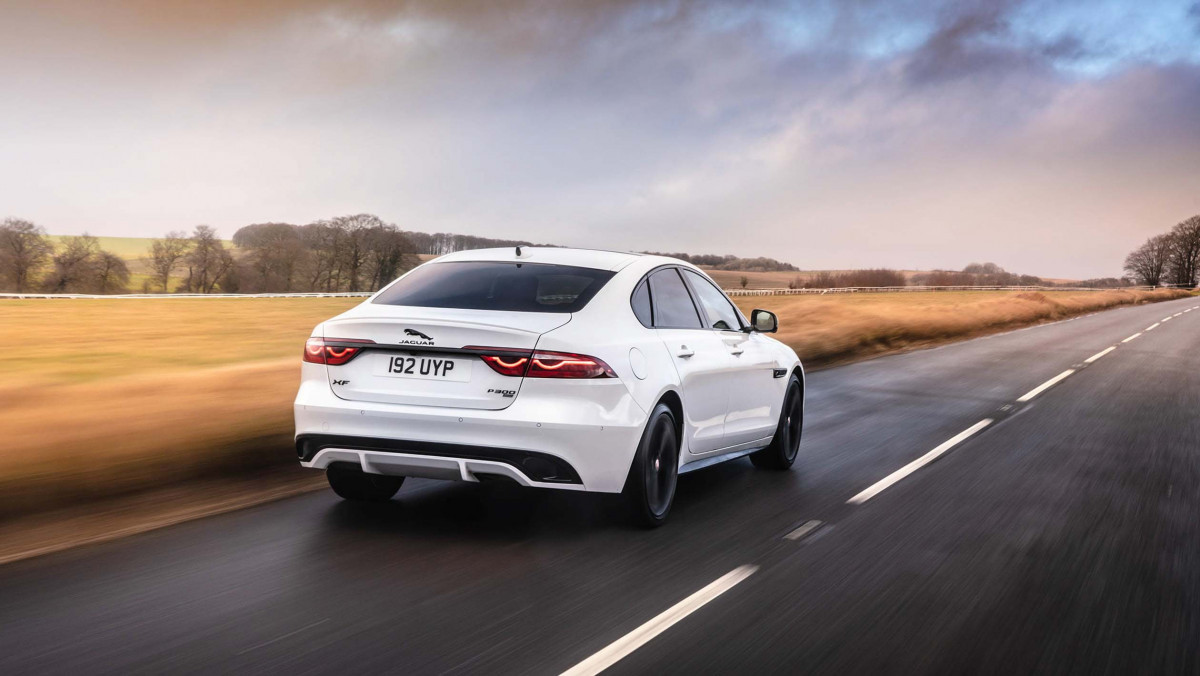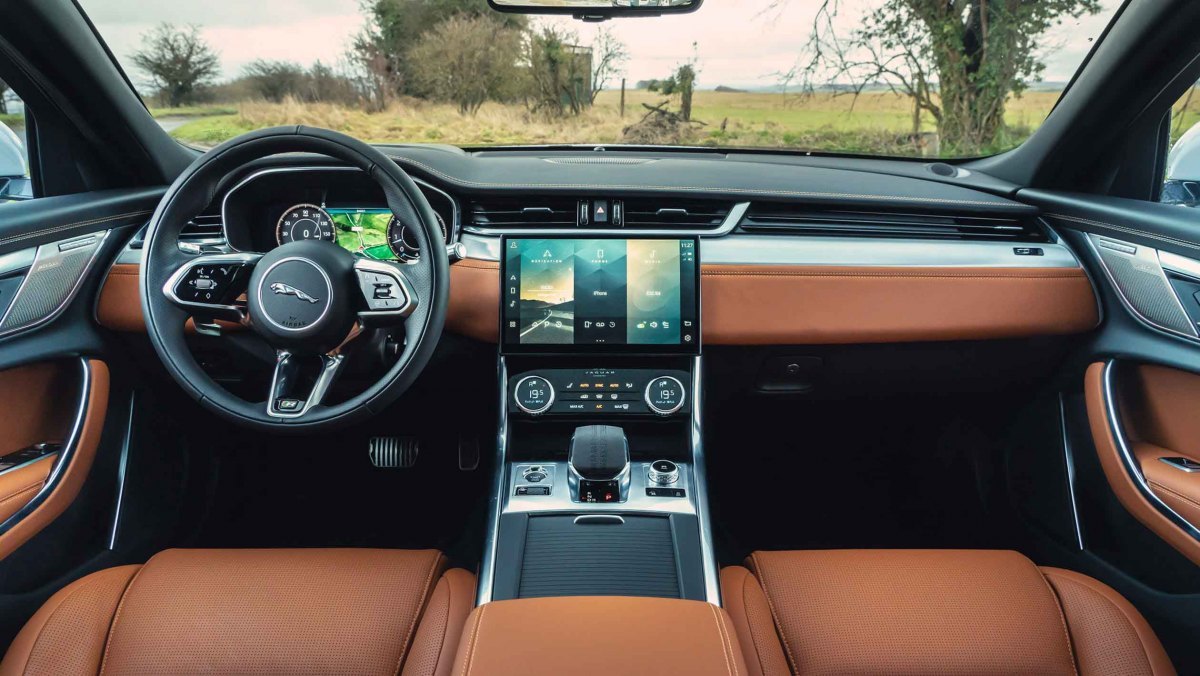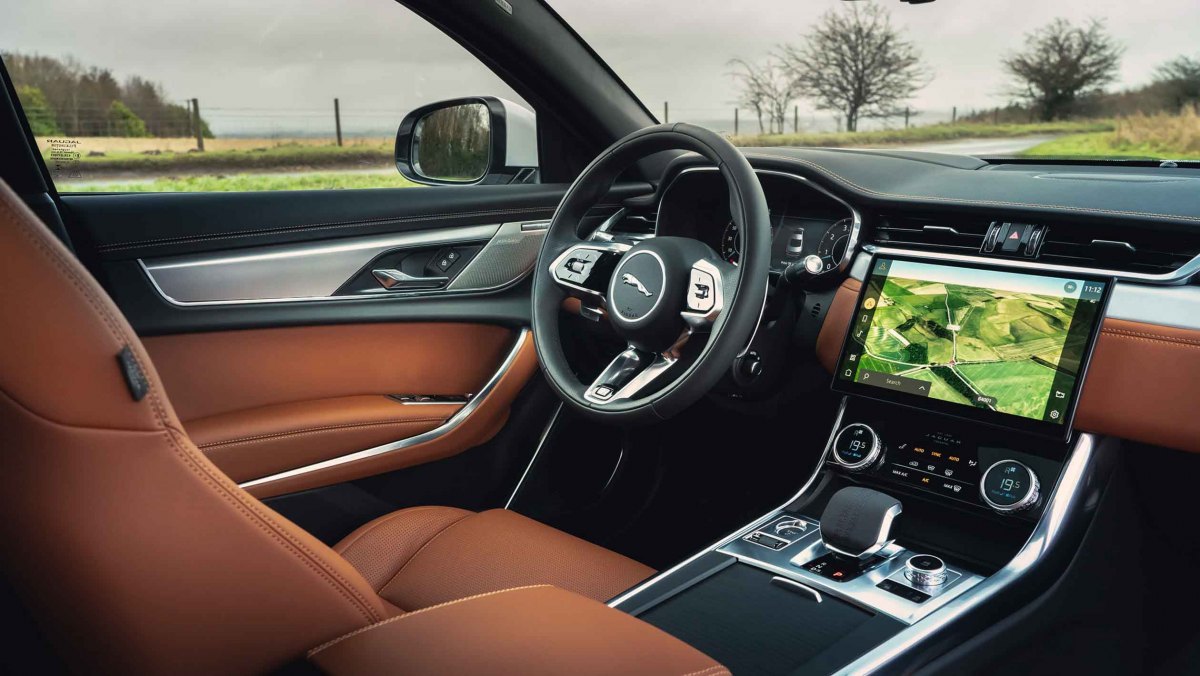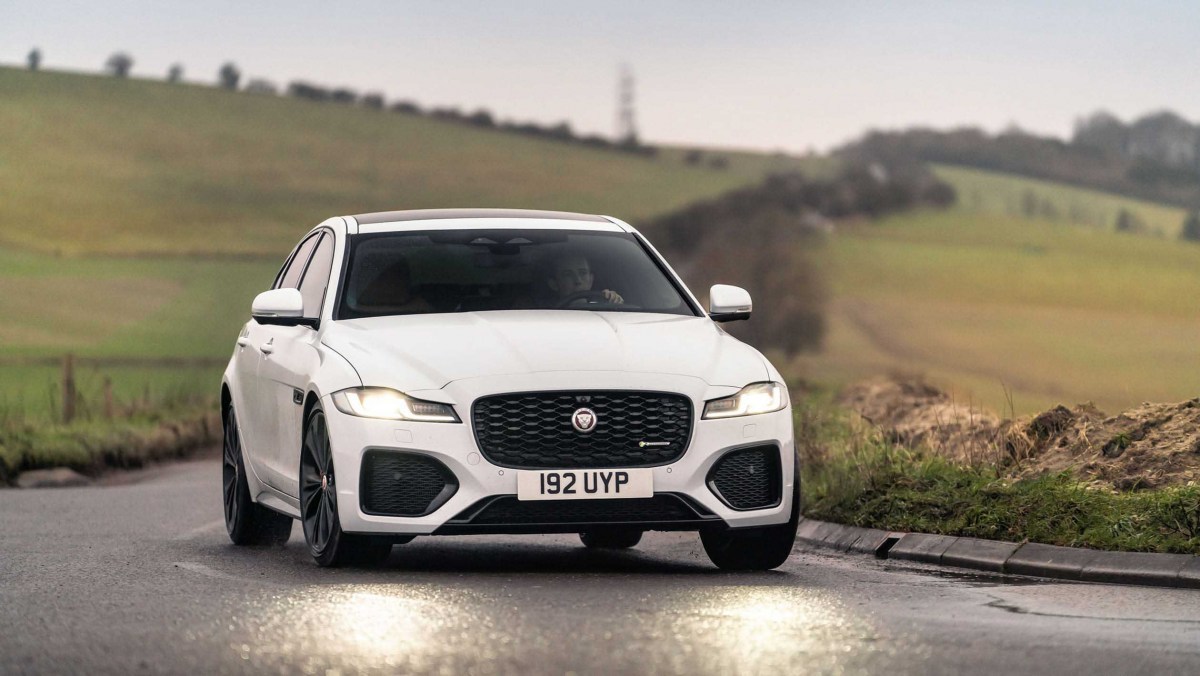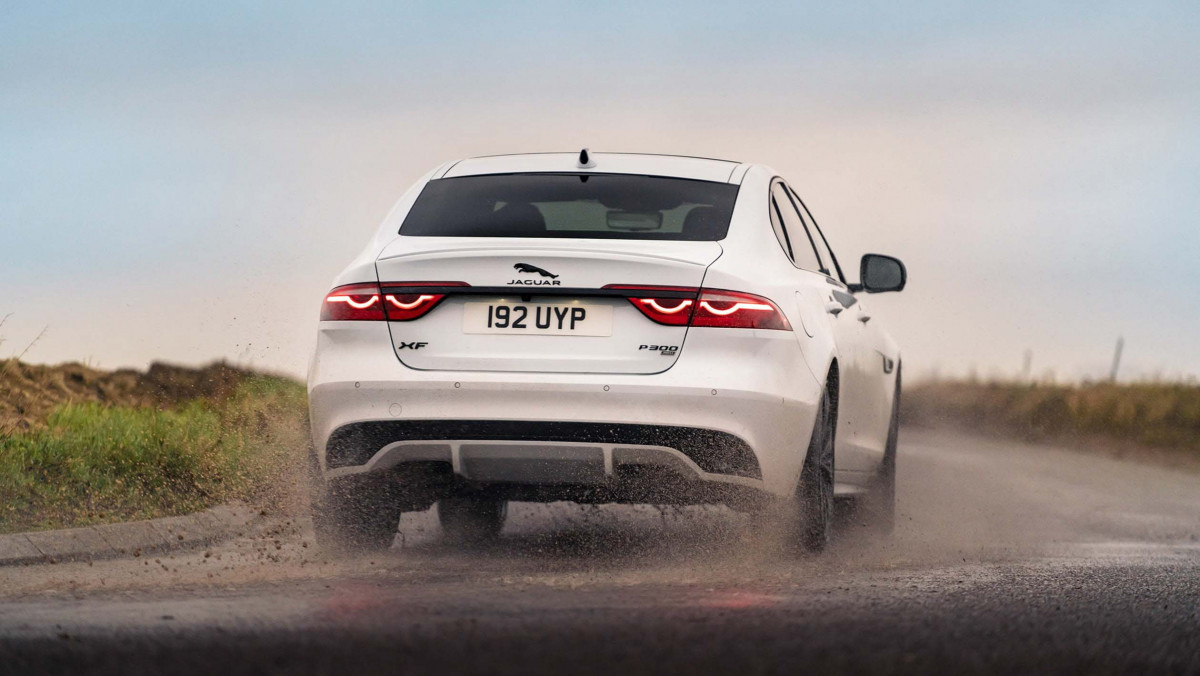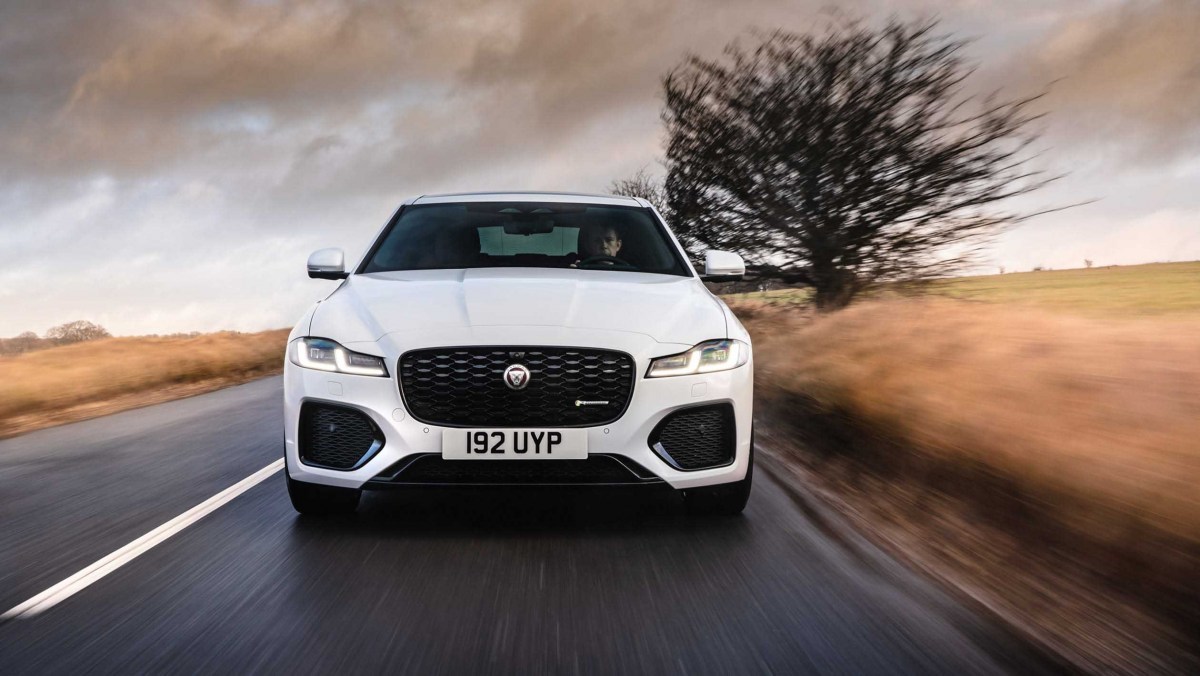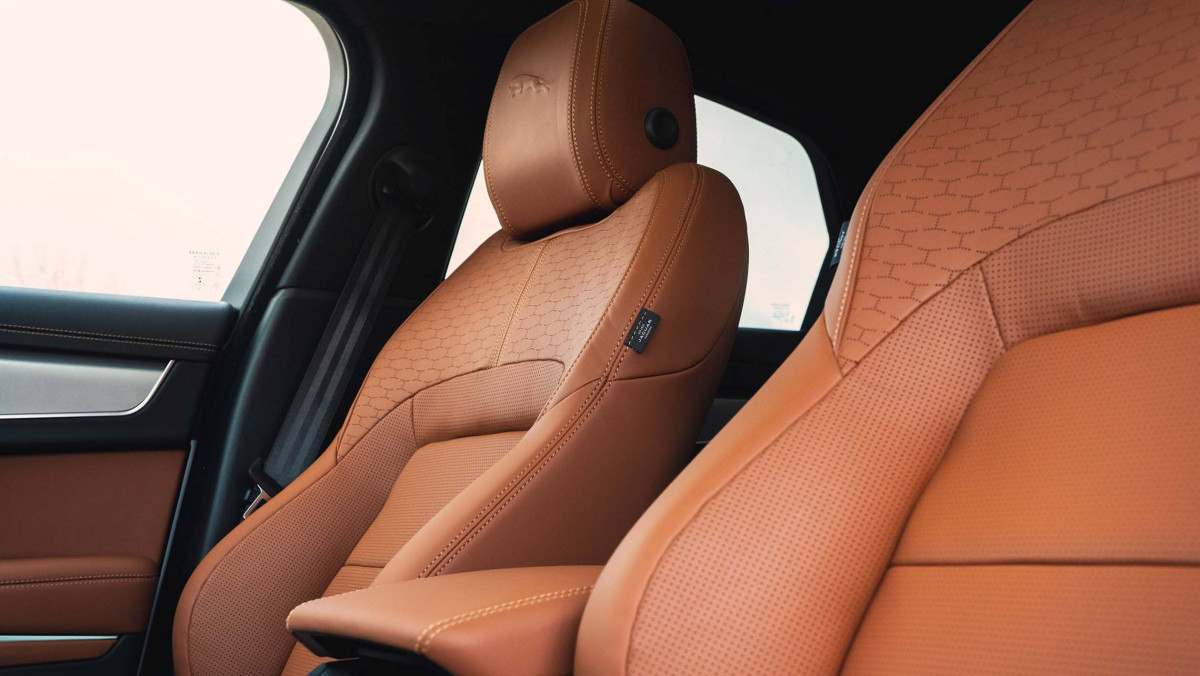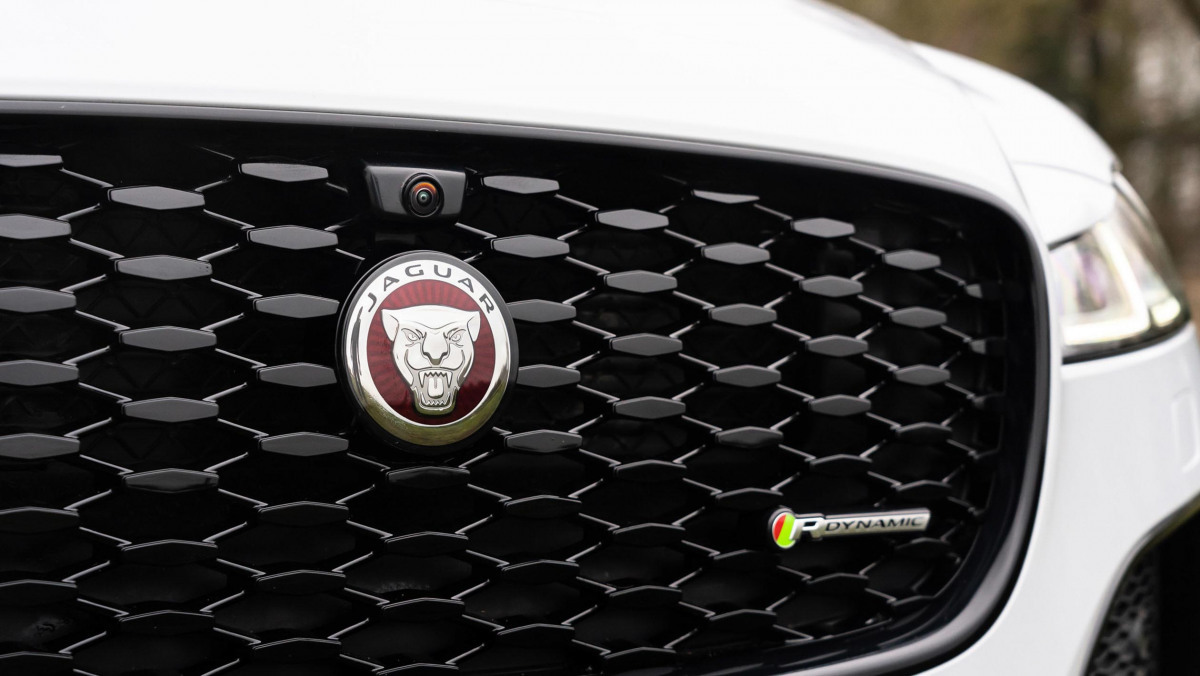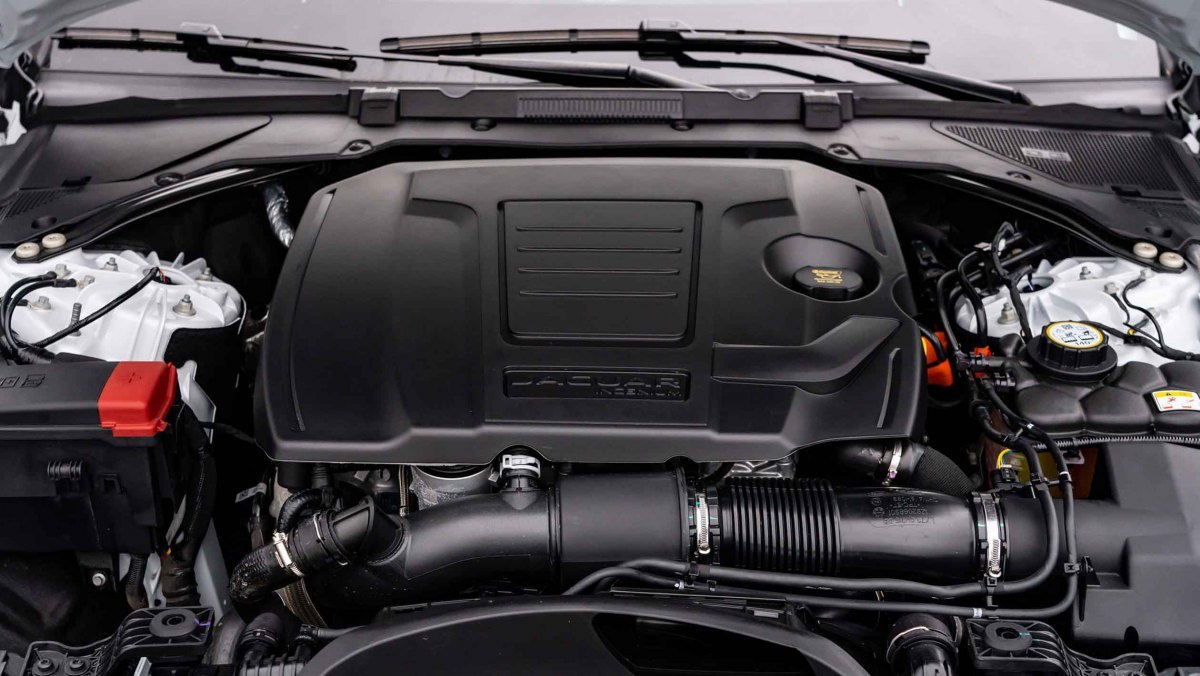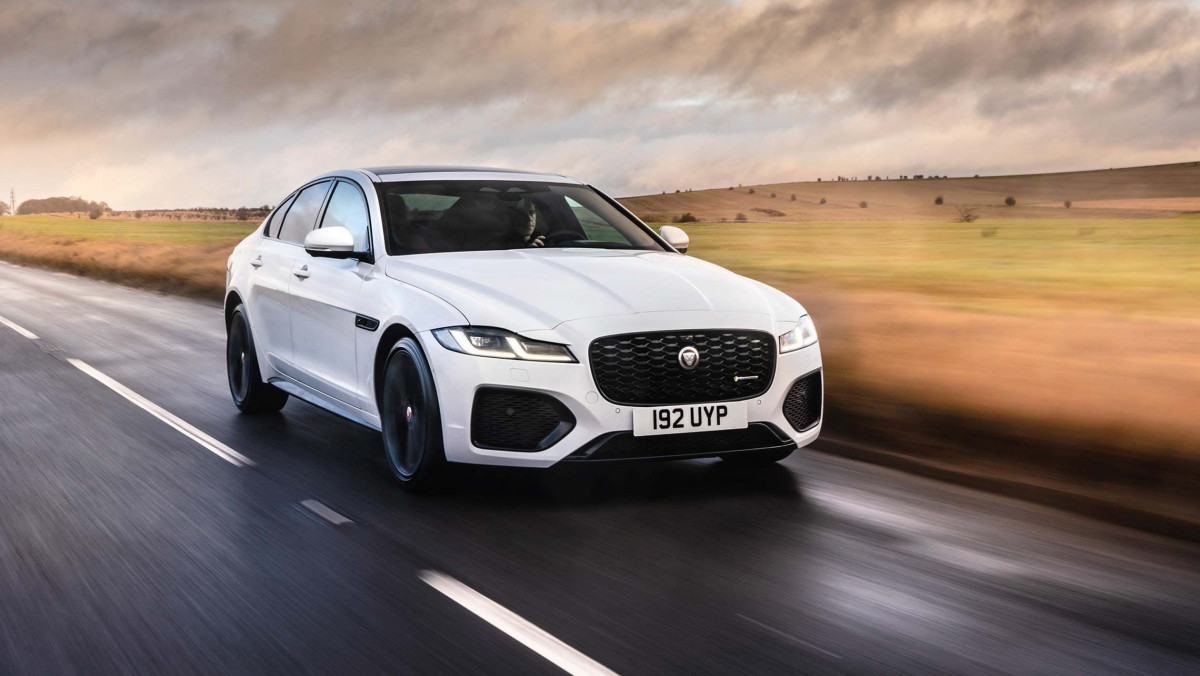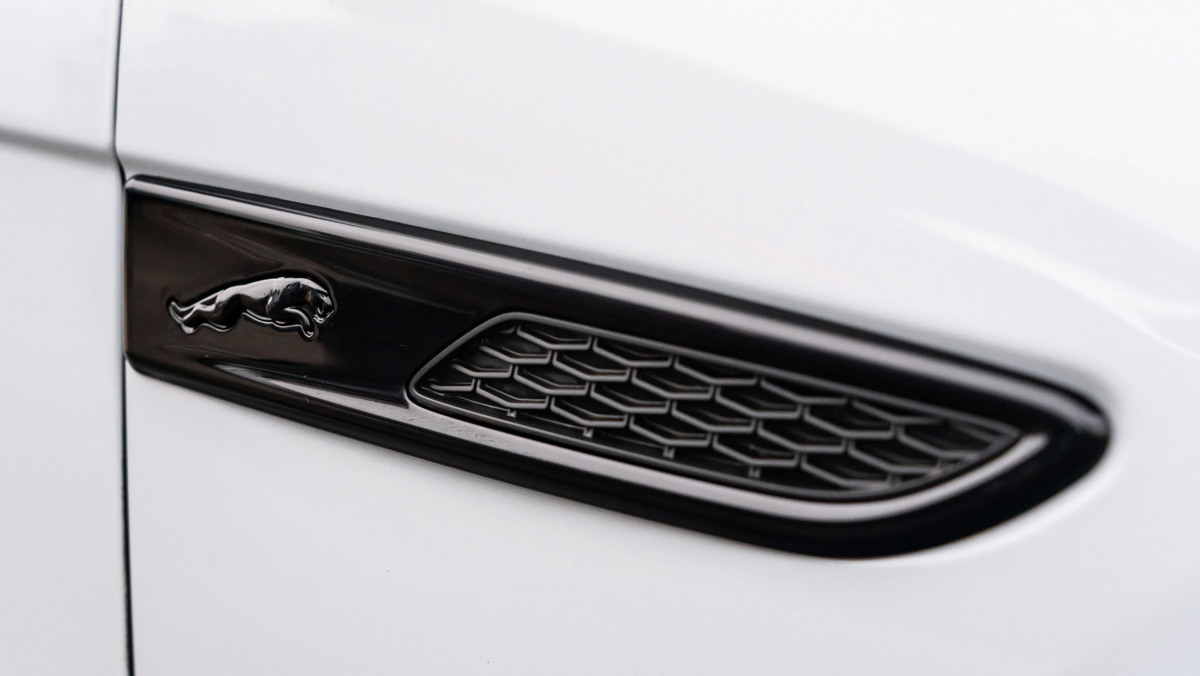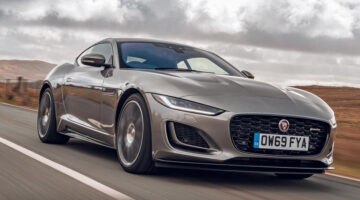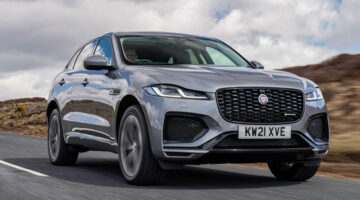The XF’s impressive chassis is now joined by a plush new interior and slick tech, but powertrains remain a significant weakness
PRICE from $45,000
The XF was something of a keystone model for Jaguar when it first appeared in 2007. The all-new executive saloon was not just a replacement for the S-Type, but also a signal that Jaguar was ready to break free of its heritage-led brand positioning and embrace change. It was this drive that forgoed the traditional Jaguar burr walnut trim and shameless retro detailing in the XF, creating in its wake, a new image of British luxury.
Fast forward to 2021 and the second generation XF is a rather different proposition. Due to a shrinking market and JLR’s investment in other products, the second generation XF has fallen to be something of an undercooked model in the range, something this dramatic mid-cycle update should address.
For 2021, Jaguar has not only nipped and tucked the exterior, but also paid attention to the previous model’s under-wrought interior, applying its latest tech. All while not forgetting the real talent of this generation XF – it’s superb chassis.
Thankfully, not much has changed under the skin, but the XF’s increasingly limited appeal is partly explained by the lack of variety of its powertrains. As such there’s no longer any high-performance models, Jaguar instead focussing the range to appeal to exactly what it thinks customers in the traditional executive class are after: a plush, refined and sophisticated cruiser.
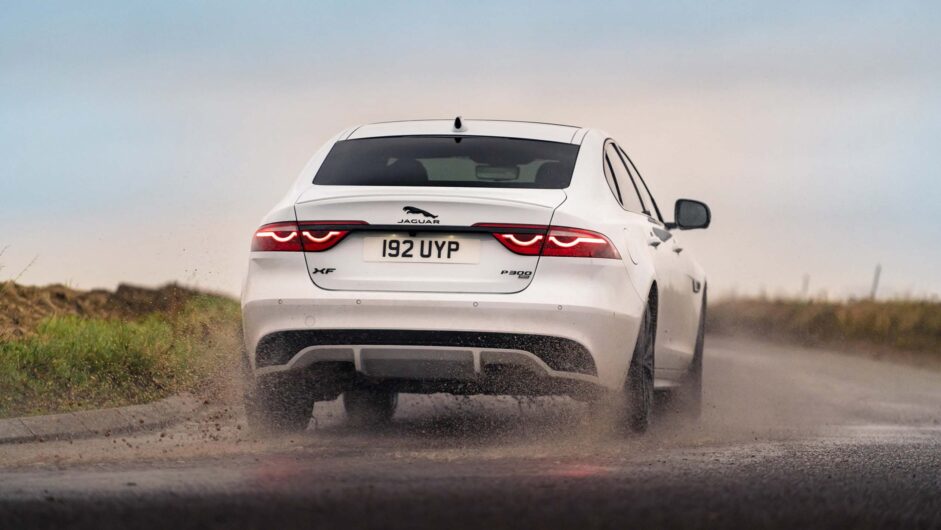
Prices, specs and rivals
This is where things get interesting, as the new XF is priced very aggressively. Starting at around $45,000, an XF with a 200bhp diesel and the standard automatic transmission is over $7500 less than a BMW 320d. Compare it to a 5-series, which is the more appropriate rival in size, and it’s getting on for over $16,000 less.
Jaguar hasn’t skimped on standard equipment either, with all models sitting on decently sized wheels and featuring slick LED lighting front and rear. Inside, the impressive new Pivi-Pro infotainment centre is standard across the range, so too are electric and heated leather seats, dual-zone climate control and a very good 3D surround-view parking camera.
Plump for a fully-loaded P300 AWD R-Design in HSE trim and it’ll still sneak under $62,000, specify an Audi A6 to the same level with a less powerful 262bhp turbocharged four-cylinder petrol engine and you’ll need to find an extra $27,000!
Estate models, or Sportbrakes in Jag speak are a tad over $3000 more than the saloon model-for-model, and are available in the same combination of engines and specifications.
- Engine, gearbox and technical details
Six- and eight-cylinder engines were once commonplace in cars of this size, but now four-cylinders are the norm and anything more a real luxury. Unfortunately, it’s a luxury the XF doesn’t currently afford customers, with only two four-cylinder engine options in a total of three power outputs between them.
The engine is Jaguar Land Rover‘s Ingenium unit in both petrol and diesel iterations. This range starts at with a 200bhp 2-litre diesel and climbs up to a 296bhp 2-litre petrol, with a 247bhp petrol variant between.
The 2-litre diesel is now equipped with a very subtle mild-hybrid system, which helps achieve a peak torque of 317lb ft available between 1750-2500rpm. Petrol models are available in two forms, the P250 with 247bhp at 5500rpm and 269lb ft at 1200rpm, and a P300 producing 296bhp and 295lb ft, those outputs appearing at 5500rpm and 1500rpm respectively. These petrol models lack the diesel’s mild-hybrid system.
The diesel is available with both rear- and all-wheel drive, while the petrols are split P250 RWD and P300 AWD. The system itself is an electromechanical one that’ll only send a portion of the power to the front wheels, keeping the XF AWD resolutely rear-biased.
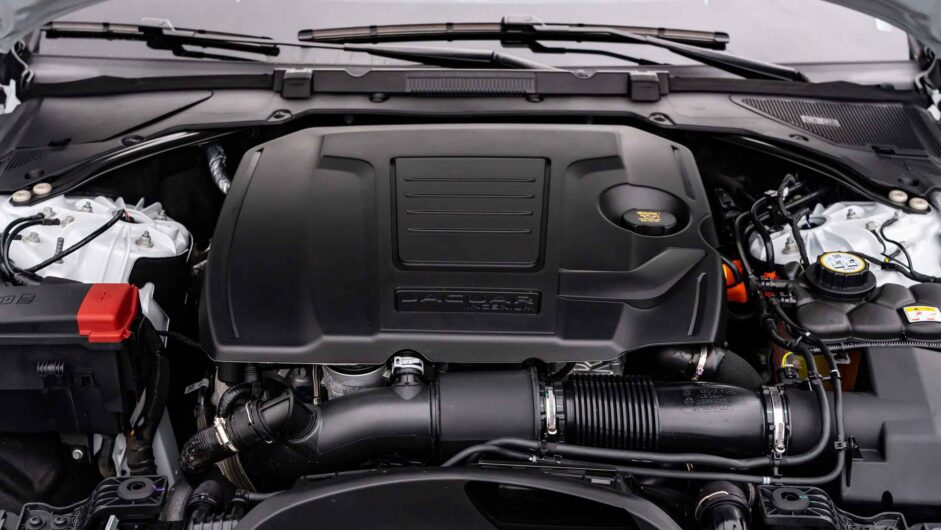
All models are fitted with an 8-speed torque-converter automatic, and while smooth, responsiveness is not very high on the agenda. When fitted to either petrol, the relatively thin torque figures require the transmission to shuffle ratios more often than is ideal, highlighting the muddled nature of the gearchanges. Left to its own devices and kept to a gentle pace, the transmission is just about benign enough to slink into the background, but try to make progress and the ‘box quickly reveals its shortcomings.
The diesel’s narrow powerband might suggest it suffers the same fate, but the extra torque in the driveline thanks to both the diesel engine and its electric augmentation seems to suit the gearbox better, quietly slipping between ratios and never really dropping out of the torque sweet spot. Up the pace and the same issues as the petrol are there, but they’re less obvious. Diesels are also just as, if not more, refined than the grumbly petrols.
- Performance and 0-100 time
The four-cylinder diesel engine does an admiral job keeping pace with its German rivals. This is not in reference to outputs on paper, but rather that the new mild-hybridised diesel feels just as flexible and responsive. It is slower though, there’s no denying that, reaching 100kph in 7.8sec (the AWD option takes this up to 8sec) which is a solid 0.5sec behind a less powerful BMW 520d.
If you do decide to push the engine to the upper part of its rev range, its deterioration in refinement doesn’t equal increased performance. Much better to keep it below 3000rpm and save any disappointment.
> Ecurie Ecosse C-type homage series revealed
The petrol four-cylinders are no more refined or responsive oddly, and when kept within a normal operating window feel less muscular than the diesels. Push them and the performance is improved though, but one must explore the very upper reaches of the rev range, which is not a particularly pleasant experience.
The rear-wheel drive P250’s 6.9sec to 100kph acceleration isn’t particularly impressive, but the P300 all-wheel drive’s 6.1sec time is more admirable, although it doesn’t quite feel that fast in the real world. The engine note is largely muted – as it should be for a car of this type – but there is a grumbly undertone that’s neither premium nor sporty.
- Ride and handling
You expect certain characteristics from a Jaguar when it comes to ride and handling; chiefly a controlled ride, a taught body and a sense of being part of the process. The XF doesn’t disappoint.
There are double-wishbones at the front, a multi-link set up at the rear with passive dampers fitted as standard across the saloon range. Six-cylinder engined cars can also be specified with optional configurable active dampers, first seen on the F-type.
Another component taken from the F-type is the latest EPAS steering, which has been further tuned to the XF’s dynamic make-up and, as in the F-Pace, is a system that Jaguar now claims provides better feedback and precision than the equivalent hydraulic system.
> Jaguar F Pace P400 HSE 2021 review – popular SUV refreshed, but can it take on a Macan?
With wheel sizes ranging from 18 through to 20 inches in diameter, the XF’s ride always remains on the calm and sophisticated side. The high profile tyres fitted to the smallest rims produce an unexpected level of ride comfort in today’s world of sharp edged characteristics and that doesn’t deteriorate significantly as the wheel diameter increases and the tyre profile decreases.
There’s real fluidity to the way the entire XF range dissects a road. On the standard passive dampers the body control never feels out of its depth, the chassis loading up with consistency, riding with a compliancy and changing direction with an agility of the very best in the executive car class. On the optional active dampers it’s a similar story, with improvements in terms of comfort in normal mode, although there’s no real discernable difference in Dynamic mode unless you really begin to push at the XF’s limits where it remains controlled until you breach the tyre’s grip and mild understeer takes over.
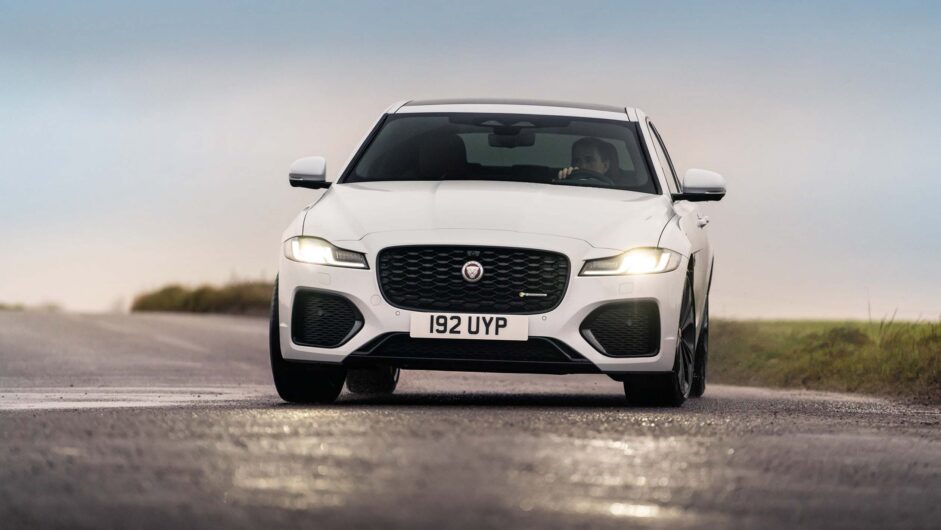
Torque vectoring is standard on all XF models, and while it doesn’t offer that on the limit the adjustability of a locking differential it’s not intrusive when it cuts in. The latest EPAS leads the class, with more natural weight than both Audi’s A6 and BMW’s 5 series, and superior feel over Mercedes’ new E class, the XF’s steering feels the most natural of all the electronic systems on the market, providing a level of feel, rate of speed and feedback unexpected from an exec saloon.
The all-wheel drive XF uses the same arrangement as the all-wheel drive F Type and F Pace; its predominantly rear wheel drive and torque is sent to the front axle if the rear loses grip. It works well in those applications, but it isn’t an inconspicuous system, whenever rear-end traction is broken as you can really sense the torque being sent to the front. However, being able to feel this process in action only makes the Jag more interesting and involving to drive.
Sportbrake models are identical in setup to the saloon save for a standard-fit self-levelling rear axle that uses air springs rather than coil springs. While the change in hardware is noticeable in the form of slightly woolier feedback, the ride quality is certainly no worse, if not any better. What this does mean is that even with the fattest Saint Bernard in the boot, the XF will stay level and contained.
- L/100km and running costs
WLTP regulations have seen the XF’s engine lineup change over the past few years and quoted economy figures have also taken a tumble – though it’s important to realise that any such changes have also been suffered by competitors.
At its most efficient, the mild-hybrid diesel is rated at 5-5.5L/100km on the combined cycle, which is a far cry from the 4L/100km-odd the original quoted on the old system, but is a few L/km above previous XF diesels. All-wheel drive and Sportbrake models each remove a couple of L/km from the total though, dropping to around 6.3L/100km for an all-wheel drive Sportbrake. In our experience, anything over 8-7.6L/100km feels like a reasonable real-world expectation.
P250 models don’t seem too compromised on paper, rated at 8-9.1L/100km, but the P300, with its bigger outputs and all-wheel drive drops this down to 8.8-9.4L/100km. In the real world, our experience with the latter powertrain delivered some quite shocking results however, barely troubling the low 14.1L/100km mark on a combination of motorway and fast A-roads. For comparison, on an identical road loop, an F Pace powered by a 394bhp straight-six petrol averaged similar numbers.
- Interior and tech
When the first XF broke cover in 2007, it was just as much its interior as the exterior that symbolised Jaguar’s incoming transformation. The cabin of that original wasn’t just a contrast to the linseed leather and walnut cliche Jaguar had fostered for decades, but was theatrical, clever and inspired.
It went on to introduce components still used within the JLR range like the rising hockey puck gear selector, rotating air vents and layered, almost architectural thought process to materials and layering. You can imagine the disappointment, then, when the second generation XF was revealed with its cost-cutting and entirely outclassed cabin from day one.
> Jaguar F-type review – flying the flag for the great British sports car
This mid-cycle has addressed the cabin’s issues. Like it did with the old S-Type, Jaguar has completely redesigned the cabin of the XF, creating a totally new dash and console, fitting new doors, significantly hiking up material quality and introducing JLR’s new Pivi Pro infotainment system accessed via a floating and curved glass touchscreen. The changes are so dramatic, not just compared to the old XF, but to other Jaguar models as well, that it’s hardly believable to come from the same company.
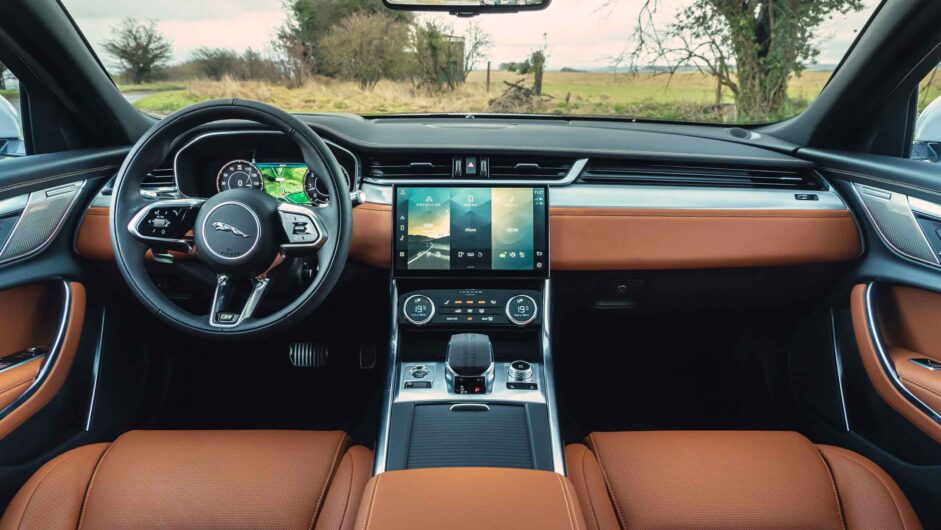
Crucial touchpoints like the steering wheel, standard gearshift paddles and touchscreen don’t just feel plush for an XF, but for the whole exec class, and while the new gear selector does feel a little cheap, it doesn’t compromise the overall aura of quality and opulence the new cabin offers.
The new infotainment is also a massive improvement, and easily feels the most user-friendly system of any German rival, while easily beating them in clarity and performance. If there’s one downside it remains the sluggish responses of the driver’s display, which although equally sleek in terms of interface design, still struggles to keep up with inputs from the steering wheel-mounted controls.
- Design
With so much attention lavished on the interior, it’s not surprising to see the exterior has gone through a rather more subtle set of changes focused around the front bumper and wheel designs. New LED headlights, a larger grille and fresh lower intakes signify the bulk of the XF’s changes, and while all are sensitively applied, the XF still lacks the aggressive confidence of the smaller XE or the stature of German rivals.
The XF’s stretched side profile and tapered tail remain mostly unchanged. Jag’s designers have attempted to draw attention to the rear end’s width with a new lower bumper section around the rear, but it looks clumsy and poorly integrated, with the exhaust and muffler behind visible as the bodywork tapers up towards the rear wheels.
> New Jaguar Land Rover electric car roadmap will see Jag become a pure EV brand
Where the Jaguar saloon goes after this XF has run its course is what we’re most curious about, With the next XJ (if it does indeed ever arrive) eschewing the traditional bootlid for a lift-back, not to mention managing without an internal combustion engine, what this means for the next generation XF, if indeed Jaguar keeps its fingers in this marketplace, remains the more pertinent question. With a new helmsman at the wheel in design director Gerry McGovern’s new JLR-wide oversight, Jaguar’s future product is sure to get a shake up regardless, with this XF most likely to see the chop if the market’s current trendline continues.
This article originally appeared at evo.co.uk
Copyright © evo UK, Dennis Publishing

